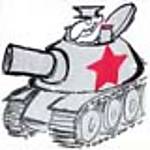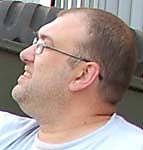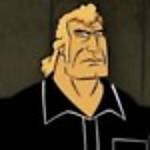1⁄35Panzerhaubitze 2000 build
10
Comments
Step 22 is another area where you tackle photo etched parts, these being for the turret stowage basket and turret air intake. I am building this as a German version and so the smaller of the two front baskets is used; the assembly and attachment of this basket has been well thought out by Meng. I did deviate from the instructions in one respect, in that I assembled the three piece plastic frame then attached it to the turret prior to adding the photo etched parts. On the subject of etched parts, make sure you place the end pieces on the correct end as they are of a different size. The machine gun station has again been well thought out, with a choice of a full or split ring, and the parts all go together very well and with a good fit.
Step 23 sees the model completed with the attachment of the turret to the hull. The only other thing you need to do is add the photo etched shield above the gun; the bending of the photo etch is not clearly explained and requires some study and thought to tackle.
Final Note
There are a lot of handles on this vehicle moulded on as solid parts that some may wish to replace with metal wire. This is perhaps the only major complaint that most will have with this model, other than the need to clean up ejector pin marks in order to make parts seat correctly.
Painting
I used Tamiya’s NATO Green, Brown and Black (XF-67, -68, -69) for the camouflage scheme. The images that I balanced in Photoshop made the brown look almost a rust red colour; because of this I have included some unbalanced images which provide a better idea of the actual colour. The detail painting and tracks are a combination of Vallejo and Tamiya paints, none of the paintwork has been sealed in these images and weathering is also something I will cover in a later feature.
Conclusion
This model from Meng is an impressive build despite having a few issues. I was surprised at the number of hidden ejector pin marks that had to be cleaned up in order to make parts locate correctly. There was only one error I found in the instructions which will easily picked up by anyone with minimal reference, something of a plus when you consider the number of parts in the kit. I was impressed by the glueless plastic tracks, which, provided they are not treated roughly, hold together fairly well. I would have liked to have seen Meng provide chains on the photo etch frets for securing the smoke launcher caps, which due to their small size are really the only detail missing. With the option of five finishes you will need to be on your toes in some steps to make sure you use the correct parts, and also to remove detail where necessary. It is worth making your decision at a very early stage regarding which version you intend to build, then removing all detail not needed from the off; I say this because there is a good deal of potential for the optional differences to throw you off track. I do highly recommend this model to you and if you need proof of that I have been out and bought another kit in order to build a Greek version.Comments
Hi Darren,
thanks for sharing this extensive build. Very helpfull.
Good to see one of the, if not the, best guns in the world at this moment as a decent model. You did a lot of detailed work!
The only remark, please, if allowed, is the camo pattern. Pls., do have a look at Google and see that the overal impression of these howitsers is far less red, but more dark. Less than 20% of the surface should be painted brown. Furthermore, the edges of the camo should be rather sharp.
But.....
All together, i like the build and your comment.
P.
NOV 21, 2014 - 07:43 PM
Regarding the end comments, yeah the Greek version is tempting, LM Decals recently released decals for it.
LINK
Cheers,
Christophe
NOV 21, 2014 - 08:08 PM
Impressive build Darren, Congratulations !
This could be something for me, i will return to do 1/35 scale AfVs in the future, as well the 1/72 scale kits.
Got a Meng Leopard, may i can did out a build here.
Cheers
Bernd
NOV 21, 2014 - 08:51 PM
Paul if you take a look at the darker pictures it shows the colour as it appears to the naked eye, the red colour occured after I balanced the pictyre in Photo Shop. I am surprised on your comments about camouflage layout as I used ref pics online and checked them against what Meng offered, I accept it is not 100% but it is close.
Thank you for your comments guys.
NOV 22, 2014 - 12:45 AM
Hi Darren, i took the liberty to comment since I have worked with these guns as an art Lcol! Actually, now I am rather confused since neither the Germans nor the Dutch have this camo pattern, so is it your intention to go further into the 4 color Greek scheme?
NOV 22, 2014 - 10:34 PM
Paul; No that is the finished main painting and I was sure I was close, I am a little rattled now as I believed I had got it right, but thank you for pointing out I have got it wrong. As you have worked on these can you show me some pics of the tools on the vehicle please, I assume they are overall green with some wear and tear present.
NOV 23, 2014 - 12:29 AM
If you compare this German scheme (photo from Prime Portal) you can see that the brown pattern in the middle is different from your portrayal. There are lots of photos on the Internet to verify - I don't know if your pattern is based on the instructions but it never hurts to double check!
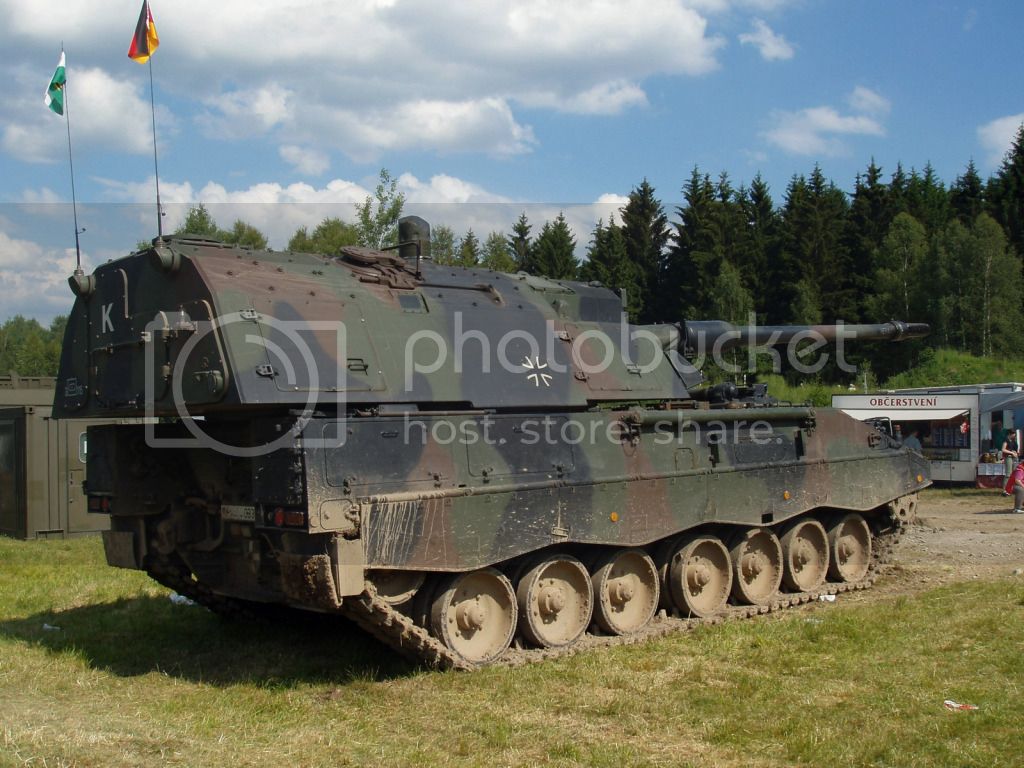
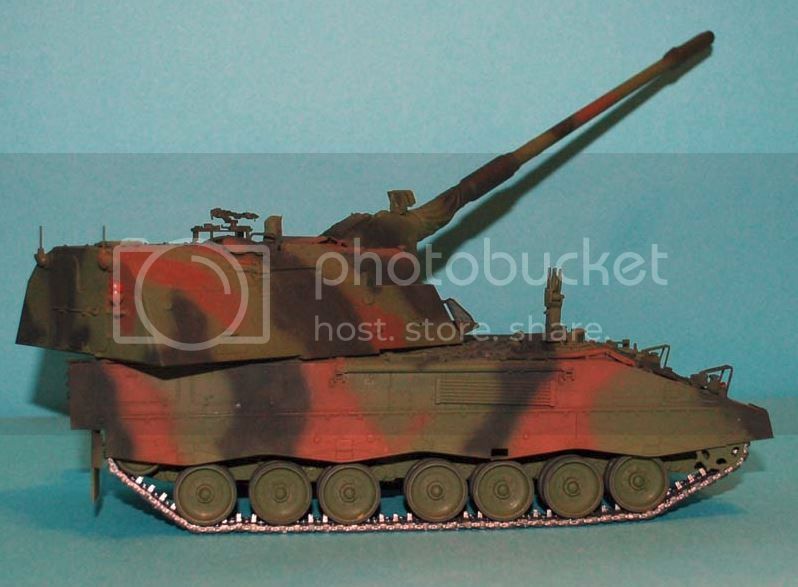 Jim
Jim

 Jim
JimNOV 23, 2014 - 01:47 AM
Hi Daren,
first of all, I believe that the most important of modeling is the fact that one enjoys building and painting.
So, I am not supposed to ordeal on that.
But the camouflage pattern on the PzH2000, if used by the German or Dutch army, show differrent patterns. Spots, no bands! Only in Afghanistan, mud was used to camouflage them, though one can discuss the (non)sence of that, based on the huge defence around these important vehicles, static and while travelling (Their value was so high that they were flown back to Europe in stead of using road and sea transport from Afghanistan)
About the tools: they were supplied together with the vehicles, thus having a NATO olive color, with, in rare cases, clear wooden parts. However, most of it was just green, close to the base vehicle colour. The wear and tear is rather rare since these vehicles do "suffer" from budget reductions, thus being used rather seldomly. Money makes the world go around, even in the army!
NOV 23, 2014 - 01:53 AM
Thank you for your review and reports of the build. Since the finished model was photographed under poor lighting, I suggest that the reddish colour i the result of the camera trying to make a picture, and not be too accurate about it. I am a modeler, and have considerable photographic experience, having worked in labs and studios during the Kodak years, in both black and white and colour, in mixing and monitoring, quality control, etc. The model looks great Darren!
MAY 17, 2016 - 04:35 AM
Copyright ©2021 by Darren Baker. Images and/or videos also by copyright holder unless otherwise noted. The views and opinions expressed herein are solely the views and opinions of the authors and/or contributors to this Web site and do not necessarily represent the views and/or opinions of Armorama, KitMaker Network, or Silver Star Enterrpises. All rights reserved. Originally published on: 2014-11-22 06:01:46. Unique Reads: 22763



























